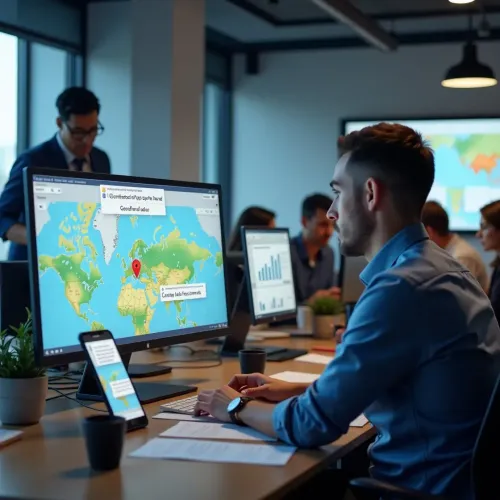Geofencing: What is it and When to Use It in Your Recruitment Agency

Let’s be honest — recruitment has gotten harder.
Candidates are busier, pickier, and you’re fighting for attention everywhere.
So if there’s a way to grab someone’s attention at exactly the right time and place, why wouldn’t you use it?
That’s where geofencing comes in.
It sounds fancy, but really, it’s just using location to talk to candidates when they’re nearby.
Not next week, not tomorrow — right now.
I’ll explain what it is, when it’s actually useful, and how smaller agencies (yep, even one-person teams) can use it without needing a giant budget.
Also, I’ll show you why pairing it with Chameleon-i (if you’re using it) makes life even easier.
What Even Is Geofencing?
Imagine drawing a circle on a map — like around a university, a job fair, or even a competitor’s building.
Now, every time someone walks into that circle with their phone, you can send them stuff.
A job ad. An invite. A reminder. Whatever you want.
It’s kind of like setting a digital trap — but in a good way.
Instead of hoping someone stumbles across your job post online, you’re getting right in front of them when it actually makes sense.
How You Can Use Geofencing Without Overthinking It
1. Hit People Where They Are
If you're hiring tech people, set up geofences around tech meetups, coding bootcamps, or coworking spaces.
If it’s healthcare roles, geofence around hospitals.
When people walk in those areas, boom — they see your ad.
No need to waste money showing your ads to people who don’t care.
2. Make Your Events Actually Worth It
Ever spent a ton setting up a stand at a career fair and barely anyone came over?
Yeah, same.
Set a geofence around the venue so you can ping people with invites and reminders the moment they’re nearby.
Simple things like "Come check us out at Booth #14!" can make a huge difference.
It’s not magic — it’s just being smart.
3. Get Local Candidates for Local Jobs
If you need someone to work at your client’s restaurant downtown, don’t advertise across the whole country.
Set a small geofence around that neighborhood and catch people who are already there.
You’ll save time, money, and honestly, you’ll probably get better applicants too.
When Geofencing Makes Sense (and When It Doesn’t)
Trying to find passive candidates?
Set a geofence around a competitor's building.
Not shady, just smart.Running an event?
Use it. Bring more people in.Hiring locally?
Perfect use case.
If you’re hiring remotely or internationally, though?
Skip it.
Geofencing works best when location actually matters.
How to Set Up Geofencing Ads Without Losing Your Mind
Here’s how you do it (super basic):
Open Facebook Ads Manager.
Choose "Traffic" or "Local Awareness."
Set the location and radius.
Make your ad.
Hit publish. Done.
Use LinkedIn Campaign Manager.
Pick an objective like "Website Visits."
Choose a location (city, zip code, or drop a pin).
Target by job titles, industries, etc.
Post your ad.
Google Ads
Go into Google Ads Manager.
Use "Location Targeting."
Draw a circle around your spot.
Run the ads.
You don’t need an agency. You can do this yourself in an afternoon.
How Chameleon-i Helps If You’re Using It
If your agency uses Chameleon-i (and honestly, you should if you’re serious about recruitment), it makes geofencing even easier.
You can:
Track when candidates are in your target zones
Send them instant job alerts
Keep tabs on who’s opening/responding
Follow up automatically
It’s basically turning a good idea into an actual system, without adding more stuff to your plate.
Final Thoughts: Should You Bother?
If you’re trying to fill local jobs, get more people to your events, or fish for passive candidates?
Yes, 100%, use geofencing.
It’s not expensive. It’s not hard.
And it works — if you use it smartly.
If you’re running global searches, remote roles, or just don't care about location at all — then geofencing isn’t your thing.
Simple.
But for most small to mid-sized recruitment agencies trying to hustle smarter, not harder?
It’s a no-brainer.